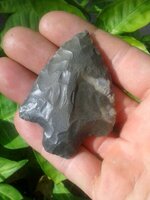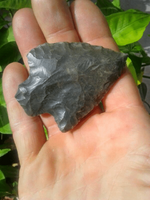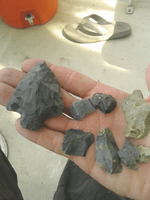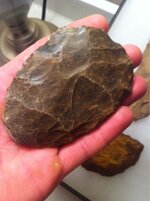GatorBoy
Gold Member
- May 28, 2012
- 14,716
- 6,149
- Primary Interest:
- All Treasure Hunting
Central Fla.
It looks like nothing I've ever found and I've not been able to find anyone else with any of it.. The inclusion is a creamy gray to white with a semi translucent crystal material in it that is blue.
I'm guessing it came from north of the area somewhere.
My apologies to those who have seen this thing 100 times but I'm still looking for the same answer.


It looks like nothing I've ever found and I've not been able to find anyone else with any of it.. The inclusion is a creamy gray to white with a semi translucent crystal material in it that is blue.
I'm guessing it came from north of the area somewhere.
My apologies to those who have seen this thing 100 times but I'm still looking for the same answer.


Upvote
0





